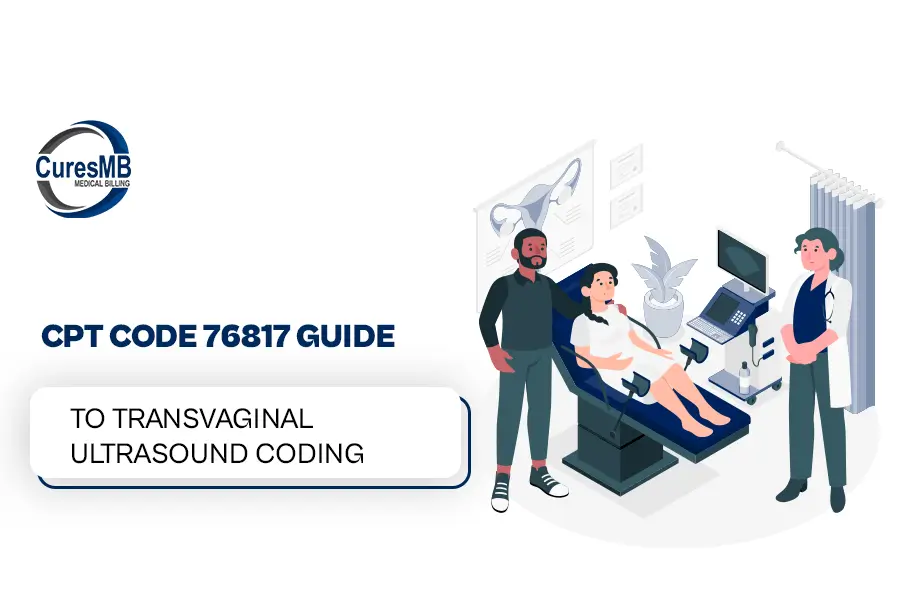
Navigating ultrasound billing can be tricky, especially when differentiating between CPT code 76817 and similar pelvic or abdominal ultrasound codes like 76830. This guide breaks down the 76817 CPT code description, usage, and billing rules to help providers avoid denials and maximize reimbursement.
CPT code 76817 is used for:
Ultrasound, pregnant uterus, real-time with image documentation, transvaginal.
One of the most common mistakes in billing is confusing 76817 (obstetric transvaginal) with 76830 (non-obstetric transvaginal ultrasound).
Code | Description | Typical Use |
76817 | Obstetric purposes (first-trimester pregnancy, cervical length check, fetal assessment) | |
76830 | Transvaginal ultrasound, non-obstetric | Gynecological purposes (pelvic pain, ovarian cysts, uterine fibroids, abnormal bleeding) |
Key tip: Always link the correct ICD-10 code (pregnancy-related vs. non-pregnancy-related) to avoid denials.
Fill out the form below and we’ll contact you shortly.
CPT code 76817 plays a crucial role in early pregnancy and pelvic diagnostics. Clear documentation, proper modifier use, and payer-specific compliance help providers secure correct reimbursement and reduce audit risks.
Need expert help with OB/GYN ultrasound billing? Contact Cures Medical Billing today for error-free claims and maximized reimbursements.
CPT 76817 is used for transvaginal ultrasound during pregnancy to evaluate the uterus, cervix, and fetus in early gestation.
Yes, CPT 76817 is generally covered by insurance when medically necessary, such as for evaluating early pregnancy, fetal viability, or gynecologic issues. Always verify payer-specific policies.
Yes, if both exams are medically necessary (e.g., abdominal + transvaginal for ectopic pregnancy). Use modifier -59 to prevent bundling issues.
Reimbursement varies by location and payer, but the national average is between $85–$130 for professional and technical components combined. Always check the current CMS fee schedule.
Common modifiers include:
No. For non-obstetric pelvic imaging, bill CPT 76830 instead.
Discover Cures Medical Billing Services Across Different States
FL
NY
ML
CO
NJ
AZ
TX
CA
WA
We are a team of national medical billing service experts based in Astoria, NY, committed to providing ongoing value to our customers. We leverage technology and implement best practices to provide high-quality and cost-efficient medical billing solutions from domestic locations, enabling customers to achieve their business goals. Cures Medical Billing is the best option for any medical billing needs.
Medical billing around Astoria, NY, and beyond is our core competency and our specialists will efficiently manage all your billing needs. Our medical billing specialists have over 12 Plus years of experience with all security technologies to ensure data integrity for our customers. Using our medical billing service, anyone can make their medical billing task less resource-consuming.
Efficiency & precision in healthcare financial management with Cures Medical Billing, your trusted partner for smarter, faster, and more accurate billing solutions.
This site uses cookies. Read our Privacy Policy